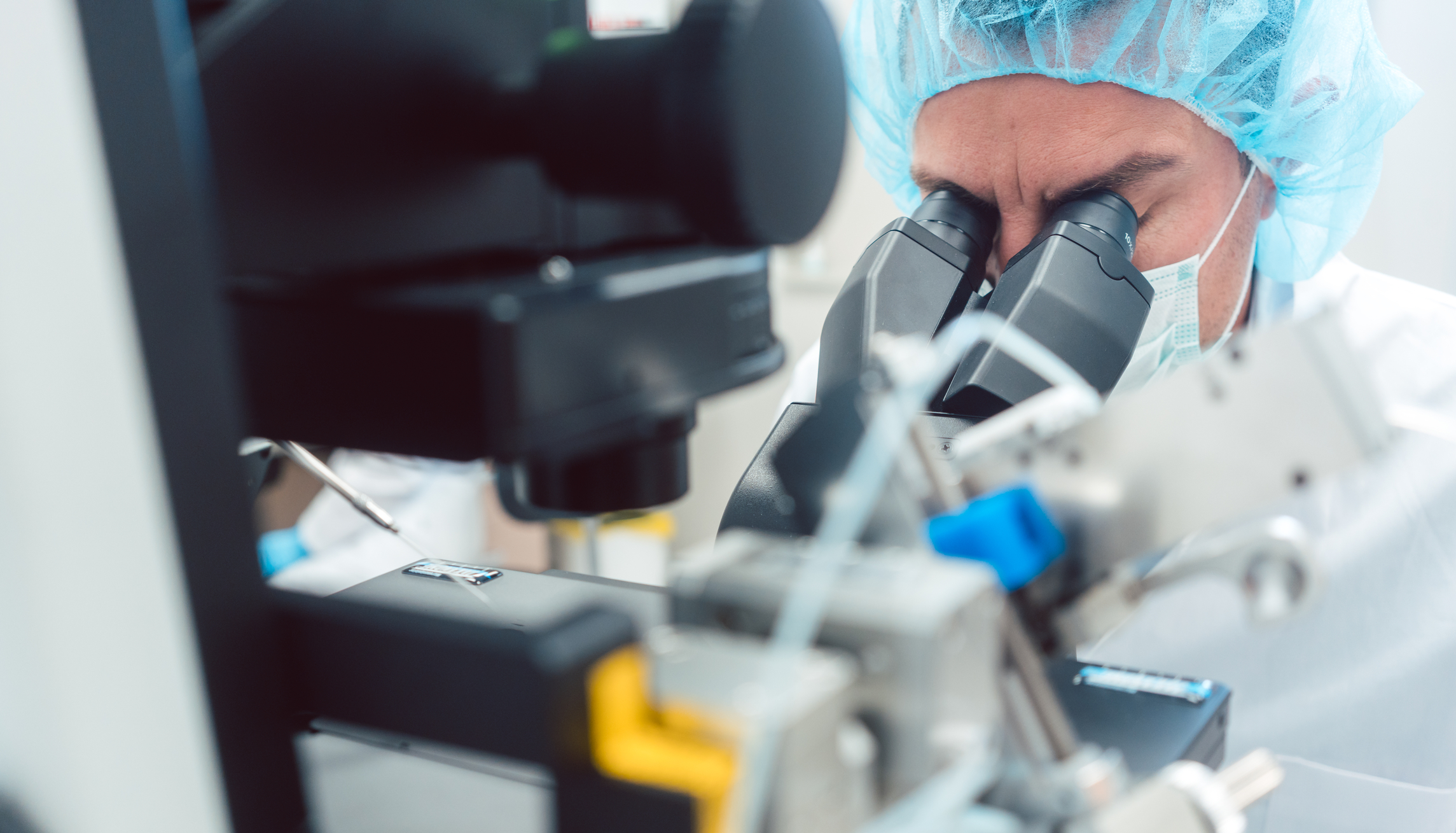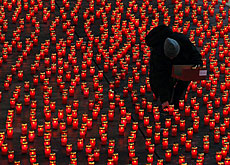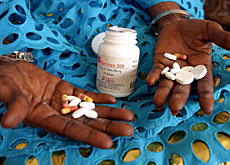UN Aids conference assesses recent progress

A Swiss official at the 2006 High-Level Meeting on Aids in New York says progress has been made in the fight against the epidemic but considerable challenges remain.
Jacques Martin, a councillor for development and health at the Swiss mission to the UN in Geneva, told swissinfo that political commitment has “broadly speaking” been a success.
The three-day meeting – taking place a week before the 25th anniversary of the first documented Aids cases on June 5, 1981 – comes as a UN report warns the epidemic continues to spread and $20 billion (SFr24.2 billion) will be needed each year to fight it by 2008.
Thousands of activists, ministers and diplomats gathered to assess progress made since 2001, when UN member states proposed an ambitious agenda with a series of targets to slow the spread of Aids.
But UN Secretary-General Kofi Annan told the General Assembly that the world has fallen far short of fulfilling the promises made five years ago. Less than half of those infected with HIV, the virus that causes Aids, have received drug treatment.
However Martin, also the Swiss representative on the board of the Global Fund to Fight Aids, Tuberculosis and Malaria, can see signs of progress, for example the world going from a “denial position” to a “clear understanding that HIV/Aids is not only a disease but a development problem that has to be tackled aggressively … with political commitment”.
Member states in New York will consider recommendations on how to scale up HIV prevention, care and support with the aim of coming as close as possible to the goal of universal access to treatment by 2010 for all those who need it.
Limited progress
On Tuesday the UN Aids office released a 630-page report that said the rate of new infections appears to be slowing but that the international community was far from getting the virus under control.
The report said nearly 40 million people are living with HIV/Aids and that India now has the largest number of Aids infections – a statistic promptly rejected by the Indian government.
The epidemic remains worst however in sub-Saharan Africa, where per capita rates continue to climb in several countries.
Women’s vulnerability to the disease also continues to increase, with more than 17 million women infected worldwide, more than three-quarters of them living in sub-Saharan Africa.
Annan said that the world has been “unconscionably slow” in providing measures to fight the spread of Aids among women and girls.
“The figures are not always extremely positive,” admitted Martin. “But there are a few instances – more than just a handful – where we can definitely say that the infection rate has peaked in a country.”
Next phase
The meeting is set to end on Friday with the adoption of a declaration setting out a new strategy for the next phase of the global drive against Aids.
For Martin there is plenty of work ahead. “First, [we need] to find the proper balance between prevention and treatment.
“Prevention on its own is not enough. Treatment belongs to prevention because if people keep dying en masse it’s very hard to pass on prevention messages. If people can live with HIV/Aids for longer, the messages are heard better.”
He added: “Other challenges are the cost and availability of drugs and the stigmatisation of certain groups including sex workers, gay men and drug users – all these things have to be taken on board.”
swissinfo, Thomas Stephens
Of the more than 38 million people living with HIV, some 2.8 million people died in 2005, most of them in sub-Sahara Africa where food supplies are scarce and health systems are weak.
Some 65 million people have contracted Aids since June 1981 and 25 million have died of it.
UNAIDS, the umbrella group leading the global campaign, estimates that about $8.3 billion was spent last year in treatment, prevention and care of orphans in low- and middle-income countries, meeting a $7 billion to $10 billion target set five years ago.
According to the Swiss Aids Federation, more than 20,000 men and women live with HIV/Aids in Switzerland. Two people are diagnosed HIV-positive every day.
The 2006 high-level follow-up to the 2001 Declaration of Commitment on HIV/Aids is taking place from May 31-June 2 at the United Nations in New York.
The meeting has involved all sectors of the international community, governments, civil society and the private sector.
During the opening session the General Assembly was addressed for the first time by someone with HIV – Khensani Mavasa, a South African activist and a representative of the Treatment Action Campaign.

In compliance with the JTI standards
More: SWI swissinfo.ch certified by the Journalism Trust Initiative












You can find an overview of ongoing debates with our journalists here . Please join us!
If you want to start a conversation about a topic raised in this article or want to report factual errors, email us at english@swissinfo.ch.